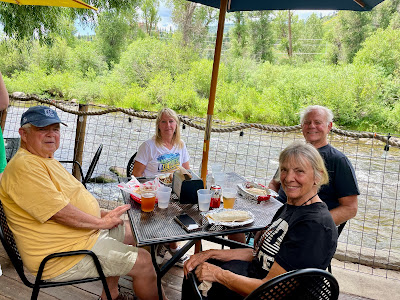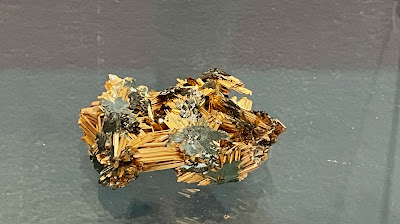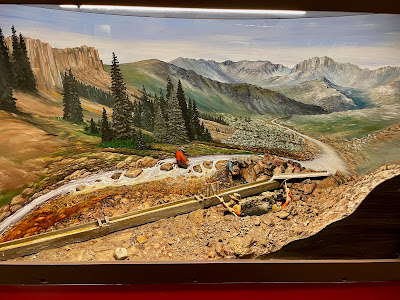The area surrounding Steamboat Springs was originally inhabited by the Yampatika band of the Utes, who hunted in the valley during the summer. Trappers began to move through the area during the first decades of the 19th century. James Crawford, the founder of Steamboat Springs, first arrived in the spring of 1874. Originally, skiing was the only method of transportation during harsh and snowy Rocky Mountain winters. In turn, the popularity of skiing as a winter pastime catalyzed development of the town. Today “the boat” as the locals call it, is a premier recreational ski resort. Steamboat Springs has produced more athletes for the Winter Olympics than any other town in North America.
"A good traveler has no fixed plans, and is not intent on arriving." ~ Lao Tzu
7.27.2022
Steamboat Springs
Camped on beautiful Rabbit Ears Pass
One day we watched a chinook helicopter dump multiple loads
of water on a fire on the other side of the butte.
Heading down the mountain into Steamboat springs.
Homes along the way
A short hike out to Fish Creek Falls
Just another great day on the road
A very lovely and free botanic garden
Marsha on the upper path
Very interesting flowers
Peruvian Lilly
Out to lunch at TacoCabo. Excellent mexican food.
Tubing is very popular. When the water reaches 75 degrees,
the river is closed to fishing and tubing because the trout are becoming stressed.
Human interaction contributes to that stress
Found a friend
Sulfur Springs, one of many in the area.
How the boat got it's name
Steamboat Springs was a geyser until workers dynamited the hillside behind it to construct the new railroad. The blast probably collapsed the underground chamber where pressure built up causing the geyser to erupt.
Hoping for a princess
A gondola ride to the mountain top to watch the sun set
Up up and away
Looking down on Steamboat Springs
The band was very good
and the main attraction
7.16.2022
Leadville
The Leadville area was first settled in 1859 when placer gold was discovered in California Gulch during the Pikes Peak Gold Rush. The early miners had noted that mining for placer gold was hampered by heavy black sand in the sluice boxes, and in 1874 it was discovered that the heavy sand that impeded gold recovery was the lead mineral cerussite, which has a high silver content.. By 1872, placer mining in California Gulch yielded more than $2,500,000, roughly equivalent to $57,000,000 in 2021. Today Leadville is a thriving town and the highest city in the U.S. at 10,510 feet.
Morning hike at Turquoise Lake
Next a visit to the Mining Museum. The best attraction in town
It houses a spectacular mineral collection
A tribute to the miners who lived, worked and died here
The rocker box is an improvement on the pan and with the help
of water, sorts larger amounts of gravel and gold
without having to squat in the river all day
An extended version of the rocker, long toms
are wooden troughs that wash water through gravel.
Using a continuous water source, the gravel is pushed
down to a riffle with a rake. The gold is caught in the
riffle box below.
The sluice box is made of a series of riffle boxes fitted together
with a constant flow of water. Miners load gold bearing gravel in
along the sides of the box and let the water wash out the dirt.
The gold particles are caught in the riffles where the miners collect them
There is an excellent model mine one can wander through
An yes, there is gold in the museum. Lots of it.
Crystalline gold
Gold in quartz
This nugget of Crystalline gold has a name, Little Jonny.
It was recovered from a muck car at the Little Jonney Mine in 1892
It weighs 24 oz, 6 oz shy of two pounds.
A gold coin scale used to detect counterfeit gold coins
A magnificent time clock for the miners to punch in on
Subscribe to:
Posts (Atom)
























































